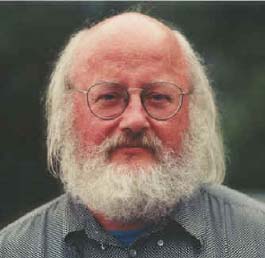Foundations Jesus Christ Church ·
Theology New Covenant ·
Supersessionism Dispensationalism Apostles ·
Kingdom ·
Gospel History of Christianity ·
Timeline Bible Old Testament ·
New Testament Books ·
Canon ·
Apocrypha Septuagint ·
Decalogue Birth ·
Resurrection Sermon on the Mount Great Commission Translations ·
English Inspiration ·
Hermeneutics Christian theology Trinity (
Father,
Son,
Holy Spirit)
History of ·
Theology ·
Apologetics Creation ·
Fall of Man ·
Covenant ·
Law Grace ·
Faith ·
Justification ·
Salvation Sanctification ·
Theosis ·
Worship Church ·
Sacraments ·
Eschatology History and traditions Early ·
Councils Creeds ·
Missions Great Schism ·
Crusades ·
Reformation Great Awakenings ·
Great Apostasy Restorationism ·
Nontrinitarianism Thomism ·
Arminianism Congregationalism Eastern Orthodox
Congregationalism Eastern Orthodox ·
Oriental Orthodox ·
Syriac Christianity ·
Eastern Catholic Western Catholicism ·
Protestantism ·
Anabaptism ·
Lutheranism ·
Calvinism ·
Anglicanism ·
Baptist ·
Methodism ·
Evangelicalism ·
Fundamentalism ·
Unitarianism ·
Liberalism ·
Pentecostalism ·
Christian Science ·
Unity Church Adventism ·
Christadelphians ·
Jehovah's Witnesses ·
Mormonism Topics in Christianity Movements ·
Denominations Ecumenism ·
Preaching ·
Prayer Music ·
Liturgy ·
Calendar Symbols ·
Art ·
Criticism Important figures Apostle Paul ·
Church Fathers Constantine ·
Athanasius ·
Augustine Anselm ·
Aquinas ·
Palamas ·
Luther Calvin ·
Wesley Arius ·
Marcion of Sinope Pope ·
Archbishop of Canterbury Patriarch of Constantinople Christianity Portal Anabaptists (
Greek ανα (again) +
βαπτιζω (baptize), thus, "re-baptizers"
[1],
German:
Wiedertäufer) are
Christians of the
Radical Reformation. Various groups at various times have been called Anabaptist, but this article focuses primarily on the Anabaptists of 16th century
Europe.
The term "anabaptist" comes from the practice of baptizing individuals who had been baptized previously, often as
infants. Anabaptists believe
infant baptism is not valid, because a child cannot commit to a religious faith, and they instead support what is called
believer's baptism.
The word
anabaptism is used in this article to describe any of the 16th century "radical" dissenters, and the denominations descending from the followers of
Menno Simons. Today the descendants of the 16th century European movement (particularly the
Baptists,
Amish,
Hutterites,
Mennonites,
Church of the Brethren, and
Brethren in Christ) are the most common bodies referred to as Anabaptist.
Anabaptist origins Though the majority opinion is that Anabaptists began with the Radical Reformers in the 16th century, certain people and groups may still legitimately be considered their forerunners.
Peter Chelcicky, 15th century
Bohemian Reformer, taught most of the beliefs considered integral to Anabaptist theology. Medieval antecedents may include the
Brethren of the Common Life, the
Hussites, Dutch Sacramentists for Bishop Longland in
England condemned an Anabaptist for repeating one of its maxims "that alms should not be given before they did sweat in a man's hand." This was between 1518 and 1521.
Some followed
Menno Simons in teaching that Jesus did not take the flesh from his mother, but either brought his body from heaven or had one made for him by the Word. Some even said that he passed through his mother, as water through a pipe, into the world. In pictures and sculptures of the 15th century and earlier, we often find represented this idea, originated by
Marcion in the 2nd century. The Anabaptists were accused of denying the
Incarnation of Christ: a charge that Menno Simons repeatedly rejected.
They condemned oaths, and also the reference of disputes between believers to law-courts.
The believer must not bear arms or offer forcible resistance to wrongdoers, nor wield the sword. No Christian has the
jus gladii.
Civil government (i.e. "
Caesar") belongs to the world. The believer, who belongs to God's kingdom, must not fill any office, nor hold any rank under government, which is to be passively obeyed.
Sinners or unfaithful ones are to be excommunicated, and excluded from the sacraments and from intercourse with believers unless they repent, according to 1 Corinthians 6:1-11 and Matt.18:15 seq. But no force is to be used towards them.
Forerunners Research on the origins of the Anabaptists has been tainted both by the attempts of their enemies to slander them and the attempts of their friends to vindicate them. It was long popular to simply lump all Anabaptists as Munsterites and radicals associated with the
Zwickau Prophets,
Jan Matthys,
John of Leiden (also Jan Bockelson van Leiden, Jan of Leyden), and
Thomas Muentzer. Those desiring to correct this error tended to over-correct and deny all connections between the larger Anabaptist movement and this most radical element.
The modern era of Anabaptist historiography arose with the work of Roman Catholic scholar
Carl Adolf Cornelius' publication of
Die Geschichte des Münsterischen Aufruhrs in 1855. Baptist historian
Albert Henry Newman (1852–1933), whom Bender said occupied "first position in the field of American Anabaptist Historiography", made a major contribution with his
A History of Anti-Pedobaptism. Though a number of theories exist concerning origins, the three main ideas are that,
Anabaptists began in a single expression in Zürich and spread from there (Monogenesis),
Anabaptists began through several independent movements (
polygenesis), and
Anabaptists are a continuation of New Testament Christianity (apostolic succession or church perpetuity).
Views of origins Waldensians (France/Germany/Italy)
Lollards (England)
Hussites (Bohemia)
Anabaptism Lutheranism Calvinism Anglicanism Puritanism Pietism Baptists Revivalism Methodists Evangelicalism Restoration movement Adventism Pentecostalism A number of scholars (e.g. Bender, Estep, Friedmann) have seen all the Anabaptists as rising out of the
Swiss Brethren movement of
Conrad Grebel,
Felix Manz,
George Blaurock, et al. The older view among Mennonite historians generally held that Anabaptism had its origins in
Zürich, and that the Anabaptism of the Swiss Brethren was transmitted to South Germany, Austria, the Netherlands, and North Germany, where it developed into its various branches. The monogenesis theory usually rejects the Münsterites and other radicals from the category of true Anabaptists. In this view the time of origin is
January 21,
1525, when Grebel baptized Georg Blaurock, and Blaurock baptized other followers. This remains the most popular single time posited for the establishment of Anabaptism. But in the last quarter of the 20th century, Deppermann, Packull, and others suggested that
February 24,
1527 at Schleitheim is the proper date of the origin of Anabaptism. This correlates with the following polygenesis theory.
Monogenesis James M. Stayer,
Werner O. Packull, and
Klaus Deppermann disputed the idea of a single origin of Anabaptists in a 1975 essay entitled "From Monogenesis to Polygenesis". That article, emphasizing distinctive characteristics and distinct sources, has become a widely accepted treatment of the plural origins of Anabaptism. According to these authors, South German-Austrian Anabaptism "was a diluted form of
Rhineland mysticism," Swiss Anabaptism "arose out of Reformed
congregationalism", and Dutch Anabaptism was formed by "Social unrest and the apocalyptic visions of
Melchior Hoffman". Pilgram Marpeck's
Vermanung of 1542 was deeply influenced by the
Bekenntnisse of 1533 by Münster theologian
Bernhard Rothmann. The Hutterites used Melchior Hoffman's commentary on the Apocalypse shortly after he wrote it.
David Joris, a disciple of Hoffman, was the most important Anabaptist leader in the Netherlands before 1540. Grete Mecenseffy and Walter Klaassen established links between Thomas Müntzer and Hans Hut, and the work of Gottfried Seebaß and Werner Packull clearly showed the influence of Thomas Müntzer on the formation of South German Anabaptism. Steven Ozment's work linked
Hans Denck and
Hans Hut with Thomas Müntzer,
Sebastian Franck, and others. Calvin Pater has shown that
Andreas Karlstadt influenced Swiss Anabaptism in areas including his view of Scripture, doctrine of the church, and views on baptism.
Polygenesis Another theory is that the 16th century Anabaptists were part of an
apostolic succession of churches (or
church perpetuity) from the time of Christ. According to this idea there had been a continuity of small groups outside the
Roman Catholic Church from A.D. 30 to 1525 (which continues also to the present). The writings of
John T. Christian,
New Orleans Baptist Theological Seminary professor, contain perhaps the best scholarly presentation of this successionist view. Somewhat related to this is the theory that the Anabaptists are of Waldensian origin. Some hold the idea that the Waldenses are part of the apostolic succession, while others simply believe they were an independent group out of whom the Anabaptists arose. Estep asserts "the Waldenses disappeared in Switzerland a century before the rise of the Anabaptist movement." Ludwig Keller, Thomas M. Lindsay, H. C. Vedder, Delbert Grätz, and
Thieleman J. van Braght all held, in varying degrees, the position that the Anabaptists were of Waldensian origin.
Apostolic succession Main article: Theology of Anabaptism Types of Anabaptists Main articles: Thomas Muentzer, Zwickau prophets, and Peasants' War Zwickau prophets and the Peasants' War Main articles: Münster Rebellion and Münster The Münster Rebellion The first leaders of the movement in Zürich —
Conrad Grebel,
Felix Manz,
George Blaurock,
Balthasar Hübmaier — were men learned in Greek, Latin and Hebrew.
In English history frequent reference is made to the Anabaptists during the 16th and 17th centuries, but there is no evidence that any considerable number of native Englishmen ever adopted the principles of the Münster sect. Many of the followers of Müntzer and Bockelson seem to have fled from persecution in
Germany and the Netherlands to be subjected to a
persecution scarcely less severe in England. The mildest measure adopted towards these refugees was banishment from the kingdom, and a large number suffered at the stake. Their
Christology and negative attitude towards the state rather indicate, as in the case of
John Wycliffe,
Jan Hus and the
Fraticelli (
Brethren), an affinity to the
Cathars and other medieval sects. But this affiliation is hard to establish.
The earliest Anabaptists of Zürich allowed that the
Picardi or
Waldensians had, in contrast with
Rome and the
Reformers, truth on their side, yet did not claim to be in their succession; nor can it be shown that their adult baptism derived from any of the older Baptist sects, which undoubtedly lingered in parts of Europe. Later on, Hermann Schyn claimed descent for the peaceful Baptists from the Waldensians, who certainly, as the records of the Flemish
inquisition, collected by P. Fredericq, prove, were widespread during the 15th century over north
France and Flanders. It would appear from the way in which Anabaptism sprang up everywhere independently that more than one ancient sect took in and through it a new lease of life.
Ritschl discerned in it the leaven of the Fraticelli or
Franciscan Tertiaries.
In
Moravia— if what Alexander Rost related be true, namely that they called themselves
Apostolici and went barefoot healing the sick—they must have at least absorbed into themselves a sect of whom we hear in the 12th century in the north of Europe as deferring baptism to the age of 30, and rejecting oaths, prayers for the dead, relics and invocation of saints.
The Moravian Anabaptists, says Rost, went barefoot, washed each other's feet (like the Fraticelli), held all goods in common, had everyone working at a handicraft, had a spiritual father who prayed with them every morning and taught them, dressed in black and recited long graces before and after meals. Zeiler also in his
German Itinerary (1618) describes their way of life.
The Lord's Supper, or bread-breaking, was a commemoration of the
Passion, held once a year. They sat at long tables, at which the elders read the words of institution and prayed. The members passed round a loaf from which each broke off a bit and ate, and they handed round the wine in flagons. Children in their colonies were separated from the parents and lived in the school, each with his own bed and blanket. They were taught reading, writing and arithmetic, as well as cleanliness, truthfulness and industry. The females married the men chosen for them.
On
April 12,
1549, certain
London Anabaptists brought before a commission of bishops asserted:
"That a man regenerate could not sin; that though the outward man sinned, the inward man sinned not; that there was no
Trinity of Persons; that Christ was only a holy prophet and not at all God; that all we had by Christ was that he taught us the way to heaven; that he took no flesh of the Virgin, and that the baptism of infants was not profitable."
One of the most notable features of the early Anabaptists is that they regarded any true religious reform as involving social amelioration. The socialism of the 16th century was necessarily Christian and Anabaptist.
Lutheranism was more attractive to grand-ducal patriots and well-to-do burghers than to the poor and oppressed and disinherited. The Lutherans and Zwinglians never converted the Anabaptists. In Austrian-controlled territories, the
Jesuits had somewhat better success in persuading or coercing many
Hutterites to rejoin the Roman Catholic Church.
Miscellany Much of the historic
Roman Catholic and
Protestant literature has represented the Anabaptists as groups who preached false doctrine and led people into apostasy. That negative historiography remained popular for about four centuries. The Roman Catholics and Protestants alike persecuted the Anabaptists, resorted to torture and other types of physical abuse, in attempts both to curb the growth of the movement and bring about the
salvation of the heretics (through recantation). The Protestants under
Zwingli were the first to persecute the Anabaptists. Felix Manz became the first martyr in 1527. On
May 20 1527, Roman Catholic authorities executed Michael Sattler. King Ferdinand declared drowning (called the
third baptism) "the best antidote to Anabaptism". It has been said that a "16th century man who did not drink to excess, curse, or abuse his workmen or family could be suspected of being an Anabaptist and thus persecuted."
[2] Estep estimates that thousands died in Europe in the sixteenth century. The Tudor regime, even those that were Protestant (
Edward VI and
Elizabeth I) persecuted Anabaptists as they were deemed too radical and therefore a danger to religious stability. This occurred particularly under Elizabeth, who desired moderate religion and disliked
Catholics,
Puritans and Anabaptists.
Thieleman J. van Braght's
Martyrs Mirror describes the persecution and execution of thousands of Anabaptists, such as
Dirk Willems, in Austria, Belgium, Germany, the Netherlands, Switzerland, and other parts of Europe between 1525 and 1660. Continuing persecution in
Europe was largely responsible for the mass immigrations to North America by Amish, Hutterites, and Mennonites.
Anabaptist women have faced horrifying human barriers to serving in ministry, including martyrdom. An estimated 525 Anabaptist women were martyred; the first was Madelyn Wens, who was burned at the stake for preaching.
Anabaptists today The Anabaptists were early promoters of a free church and freedom of religion (sometimes called
separation of church and state).
"Where men believe in the freedom of religion, supported by a guarantee of separation of church and state, they have entered into that heritage. Where men have caught the Anabaptist vision of discipleship, they have become worthy of that heritage. Where corporate discipleship submits itself to the New Testament pattern of the church, the heir has then entered full possession of his legacy."
Freedom of religion Priesthood of all believers Bible as the sole rule of faith and practice
Pacifism See also



 The 1848 Revolutions and the Second Republic
The 1848 Revolutions and the Second Republic

 Suitbert the Younger
Suitbert the Younger

 Athletics
Athletics
 See also
See also


 Ad campaign
Ad campaign


 Backbench career
Backbench career Libel action
Libel action